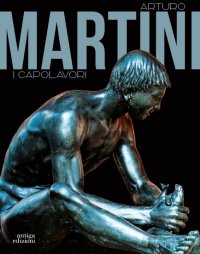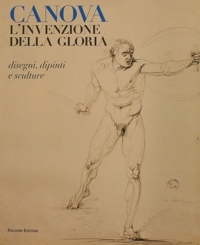Arturo Martini. I capolavori
Treviso, Museo “luigi Bailo”, March 31 - July 30, 2023.
Edited by Stringa Nico and Fabrizio Malachin.
Cornuda, 2023; paperback, pp. 278, col. ill., cm 23x29.
cover price: € 33.00
|
Books included in the offer:
Arturo Martini. I capolavori
Treviso, Museo “luigi Bailo”, March 31 - July 30, 2023.
Edited by Stringa Nico and Fabrizio Malachin.
Cornuda, 2023; paperback, pp. 278, col. ill., cm 23x29.
FREE (cover price: € 33.00)
Studi su Arturo Martini. Per Ofelia
Edited by Matteo Ceriana and Claudia Gian Ferrari.
Milano, Atti del Covegno, 19 maggio 2008.
Milano, 2009; paperback, pp. 136, 97 b/w ill., cm 17x24.
FREE (cover price: € 29.00)
Canova. L'invenzione della gloria. Disegni, dipinti e sculture.
Genova, Palazzo Reale, April 16 - July 24, 2016.
Edited by Giuliana Ericani and Franceasco Leone.
Roma, 2016; paperback, pp. 306, col. ill., col. plates, cm 23x30.
FREE (cover price: € 35.00)
Imprint of the Future. Destiny of Piranesi's City. L'impronta del futuro. Il destino della città di Piranesi.
Sergei Tchoban
DOM Publishers
Roma, Istituto Centrale per la Grafica, October 15, 2020 - January 31, 2021.
Texts by Anna Martovitskaya.
Italian and English Text.
Berlin, 2020; clothbound, pp. 168, 135 col. ill., cm 29x29.
ISBN: 3-86922-607-2 - EAN13: 9783869226071
Subject: Architects and their Practices,Essays (Art or Architecture),Graphic Arts (Prints, Drawings, Engravings, Miniatures),Urbanism
Languages: 

Weight: 1.24 kg
A native of St Petersburg who has organically absorbed the harmony of this city's proportionality and similitude, Sergei Tchoban has always striven to understand the laws which govern the development of cities like St Petersburg and the great prototypes in whose image it was created. Is it possible to preserve these cities' outstanding quality? And is it possible to pursue this quality today, at the current stage of development of architecture? These are the central questions posed in the exhibition and the book, which marks the 300th anniversary of the birth of Giovanni Battista Piranesi (1720-1778). One of the greatest artists of his time, Piranesi succeeded in capturing the development of the European city as a phenomenon which, despite many layers and internal contradictions, is nevertheless harmonious.
In analyzing the development of the language of architecture that is characteristic of our time, Sergei Tchoban integrates individual emphatically futuristic volumes into the panoramas of streets in the European city. Subsequently, he transcribes these elements into 18th-century Roman situations recreated on the basis of motifs taken from Giovanni Battista Piranesi's Vedute di Roma. Four of these fantasies are original prints of etchings by Piranesi into which elements of an architecture of the future have been inserted using the medium of etching (executed by the architect Ioann Zelenin on the basis of ideas and sketches by Sergei Tchoban). This insertion of futuristic buildings into situations taken from, and then etchings by, Piranesi is a vivid demonstration of how contemporary architecture behaves and is perceived in the body of the European city, a city based on the harmony of similitude. Ruined masterpiece or imprint of the future? This is probably the principal question for this research. Using graphic art and etching to stage the destruction of a monument (the original of a Piranesi etching), Sergei Tchoban initiates a discussion about whether this kind of integration is merely an act of vandalism - or a way of transforming a reproduction print (many European cities created by the mighty force of the harmony of similitude are indeed very similar to one another) into an original that exists as a unique copy. Are we destroying harmony or creating a fundamentally new type of harmony? Sergei Tchoban is sure that this painful transformation of the European city has been happening for at least 100 years and that society must finally work out how to relate to this process. Essentially, it is this that is Piranesi's true legacy: a call to an honest conversation regarding the condition of the layers and parts that constitute the European city as a highly important piece of our heritage and at the same time a space for future development.











